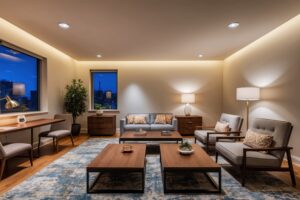
Lighting plays a crucial role in shaping the ambiance and functionality of a home interior. The right lighting choices can transform a space, making it feel warm, inviting, and visually appealing. A well-lit home enhances comfort, highlights architectural details, and improves the overall aesthetic. Whether designing a new space or revamping an existing one, understanding different lighting techniques and their impact on a home interior is essential.
From statement chandeliers to subtle ambient lighting, each fixture contributes to the atmosphere of a room. By carefully selecting and layering lighting options, homeowners can create a dynamic and stylish home interior that is both practical and elegant. In this article, we will explore how different lighting solutions can enhance various spaces, offering tips on choosing the perfect lighting fixtures for a well-balanced home interior.
The Importance of Lighting in a Home Interior
Lighting influences the mood and functionality of a home interior. A well-lit space can make a room feel larger, more inviting, and visually cohesive. Natural light plays a vital role in creating an airy and open ambiance, while artificial lighting ensures the home remains well-lit even after sunset.
Proper lighting enhances interior decor, highlighting textures, colors, and furnishings. A dark or poorly lit space can make even the most stylish home interior feel dull and unwelcoming. On the other hand, the right combination of lighting fixtures can bring warmth, depth, and character to any room.
Types of Lighting for a Balanced Home Interior
Creating a well-balanced home interior requires a combination of lighting types that work together to achieve both style and functionality. By layering these different lighting sources, you can achieve the perfect balance of brightness, warmth, and visual appeal. Let’s see how:
Ambient Lighting for Setting the Foundation
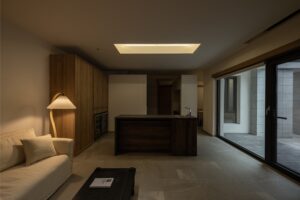 Ambient lighting serves as the primary source of illumination in a home interior, ensuring a well-lit and inviting atmosphere. Ceiling-mounted fixtures such as chandeliers, pendant lights, and recessed lighting evenly distribute light across a room, reducing shadows and creating a warm glow.
Ambient lighting serves as the primary source of illumination in a home interior, ensuring a well-lit and inviting atmosphere. Ceiling-mounted fixtures such as chandeliers, pendant lights, and recessed lighting evenly distribute light across a room, reducing shadows and creating a warm glow.
Natural light from large windows also plays a significant role in ambient lighting, brightening the space while reducing the need for artificial sources during the day. A well-planned ambient lighting setup enhances the openness of a room, making it feel spacious and comfortable while serving as a base for additional lighting layers.
Task Lighting for Enhancing Functionality
 Task lighting focuses on specific areas of a home interior where extra brightness is needed for activities such as reading, cooking, or working. Under-cabinet lights in kitchens improve visibility for food preparation, while bedside lamps in bedrooms provide focused illumination for nighttime reading.
Task lighting focuses on specific areas of a home interior where extra brightness is needed for activities such as reading, cooking, or working. Under-cabinet lights in kitchens improve visibility for food preparation, while bedside lamps in bedrooms provide focused illumination for nighttime reading.
Desk lamps, vanity lights, and pendant lights over workspaces enhance functionality while reducing eye strain. Task lighting is essential for increasing productivity and comfort, ensuring that homeowners can perform daily tasks efficiently while maintaining a well-lit and practical living space that meets their specific needs.
Accent Lighting for Highlighting Design Elements
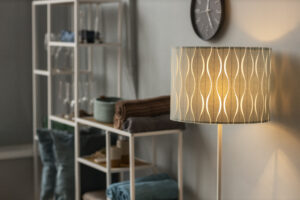 Accent lighting is used to draw attention to focal points within a home interior, such as artwork, architectural details, or statement furniture. Wall-mounted sconces, picture lights, and LED strip lighting add depth and contrast to a space, enhancing its visual appeal.
Accent lighting is used to draw attention to focal points within a home interior, such as artwork, architectural details, or statement furniture. Wall-mounted sconces, picture lights, and LED strip lighting add depth and contrast to a space, enhancing its visual appeal.
This type of lighting creates a sense of drama and sophistication, helping to define different areas within a room. By strategically placing accent lighting, homeowners can emphasize key design elements, adding character and personality to their living spaces while complementing the overall lighting scheme of their home.
Decorative Lighting for Style with Illumination
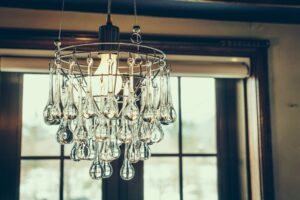
Decorative lighting serves as both a functional and aesthetic feature in a home interior, offering a stylish way to enhance the design. Chandeliers, sculptural floor lamps, and uniquely designed pendant lights act as statement pieces that elevate the decor. These fixtures not only provide necessary illumination but also serve as artistic elements that reflect personal style.
Whether using crystal chandeliers for a touch of luxury or modern geometric lighting fixtures for a contemporary look, decorative lighting adds charm and sophistication while maintaining a well-balanced lighting design that complements the rest of the space.
Smart Lighting for Convenience and Efficiency

Smart lighting has revolutionized the modern home interior, offering homeowners greater control over brightness, color temperature, and energy efficiency. Voice-activated lights, motion sensors, and app-controlled settings provide convenience, allowing users to adjust lighting based on mood or time of day.
Smart bulbs with dimmable features enable customizable ambiance, ensuring the perfect lighting for different activities. These advancements help reduce energy consumption while enhancing comfort, making smart lighting a valuable addition to any home. By integrating smart lighting solutions, homeowners can achieve a seamless blend of technology and style that enhances the overall living experience.
Natural Lighting for Maximizing Sunlight Indoors
 Natural light plays a vital role in a well-designed home interior, reducing reliance on artificial sources while creating a bright and airy feel. Large windows, glass doors, and skylights allow sunlight to flood the space, enhancing mood and energy levels. Light-colored walls, mirrors, and reflective surfaces help distribute natural light more effectively, brightening dark corners and making rooms appear larger.
Natural light plays a vital role in a well-designed home interior, reducing reliance on artificial sources while creating a bright and airy feel. Large windows, glass doors, and skylights allow sunlight to flood the space, enhancing mood and energy levels. Light-colored walls, mirrors, and reflective surfaces help distribute natural light more effectively, brightening dark corners and making rooms appear larger.
By incorporating sheer curtains or blinds, homeowners can control the amount of sunlight entering their space while maintaining privacy. Maximizing natural light not only enhances aesthetics but also contributes to a healthier and more sustainable living environment.
Layering Lighting for a Cohesive Look
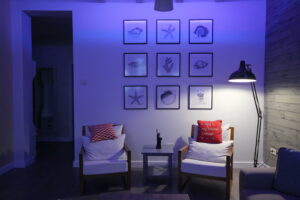 A balanced home interior requires a combination of ambient, task, accent, decorative, and natural lighting to achieve harmony. Layering different lighting sources ensures that every room has the right brightness and mood.
A balanced home interior requires a combination of ambient, task, accent, decorative, and natural lighting to achieve harmony. Layering different lighting sources ensures that every room has the right brightness and mood.
Dimmers and smart lighting controls further improve adaptability, allowing you to switch between different lighting levels based on their needs. A cohesive lighting plan enhances comfort, improves functionality, and elevates the overall look of a space.
Conclusion
Lighting is a fundamental element of any home interior, influencing its atmosphere, functionality, and visual appeal. By carefully selecting and layering lighting fixtures, homeowners can create a well-balanced and inviting space. From ambient lighting that sets the mood to task lighting that enhances functionality and accent lighting that adds a decorative touch, each type plays a vital role in shaping a stylish home interior.
Choosing energy-efficient and smart lighting solutions further enhances convenience and sustainability. By integrating the right lighting strategies, homeowners can transform their home interior into a beautifully illuminated space that is both practical and aesthetically pleasing.
Ready to turn your Singaporean home interior into reality? Book an appointment with E³.SPACE, and let us bring your vision to life.

